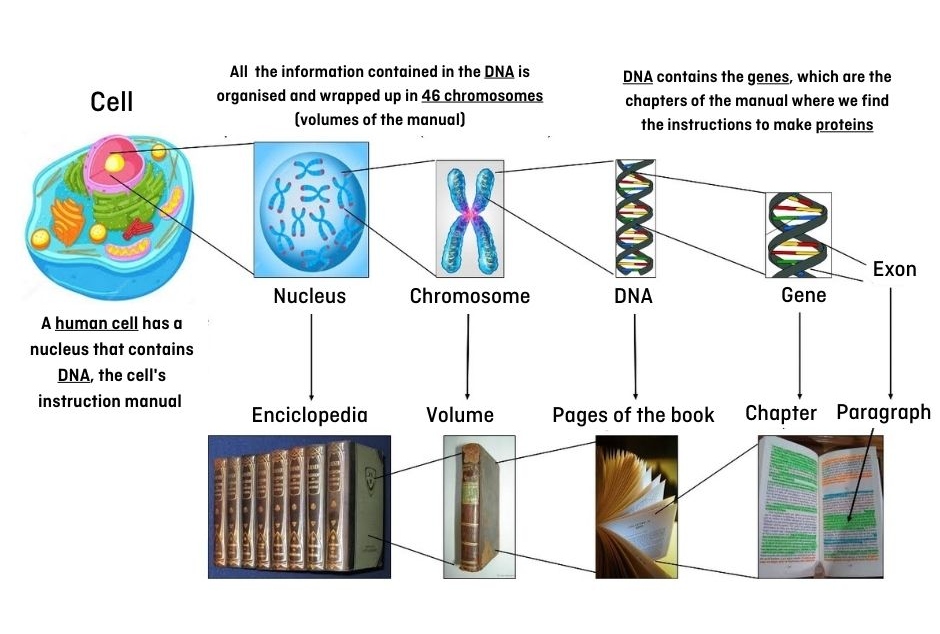Epidermolysis bullosa
2. Genetics in EB
Our body comprises billions of cells that organise into various types, creating tissues and organs such as the skin, liver, eyes, and more, each assigned distinct functions. Inside each cell, there is a nucleus and, inside the nucleus, we can find DNA, which is the cell instruction manual, as it provides orders on how the cells should look and what is their role in the organism. A skin cell is different from an eye cell because it has received other instructions via DNA.
DNA is contained in chromosomes, which would be, following the analogy, the different volumes of the instruction manual. At the same time, the chromosomes are divided into chapters called genes, each gene a chapter in each book. There are approximately 25,000 genes that give the cell information on how they should work and develop specific proteins for each function (Figure 3).
Every gene provides the blueprint for constructing a particular protein, with each protein serving a specific role within the cell. These proteins play a pivotal role in shaping the growth, development, and overall functioning of our body. However, when errors or "mutations" arise in the genetic code, disrupting the accurate transmission of information within the gene, the resulting protein may fail to operate effectively.
Currently, there are around 20 genes known to cause EB if they are mutated. In the same gene, we can find more than 1,000 types of errors or mutations. Depending on the part of the gene where it is located, the resulting protein can either be non-functional (it will not work correctly), be produced in insufficient quantities or be absent, which means that each person will manifest the disease in different ways, depending on what kind of mutation they have. All of this makes the prognosis of EB (knowing how the disease will evolve through time) very difficult.
